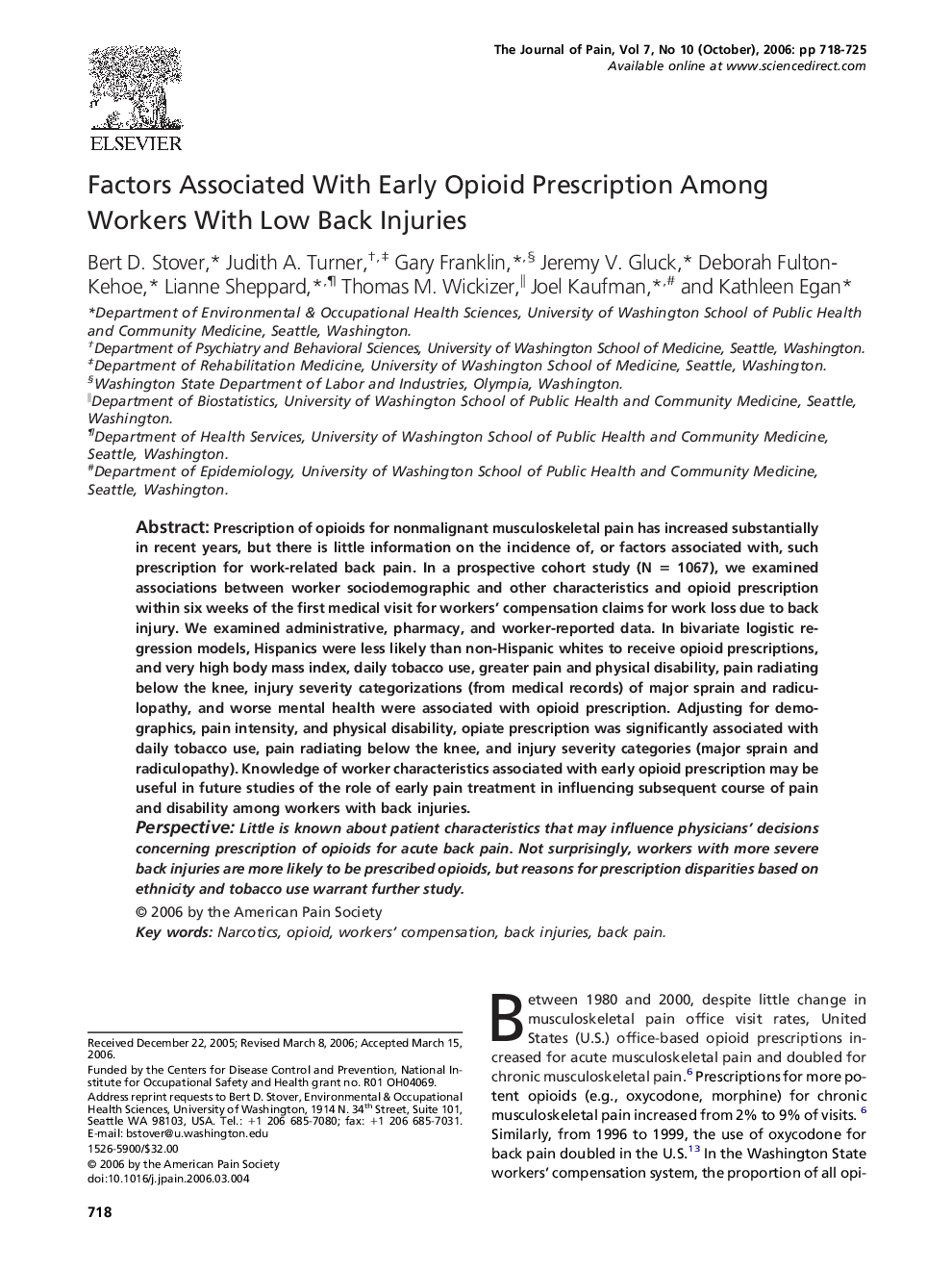| Article ID | Journal | Published Year | Pages | File Type |
|---|---|---|---|---|
| 2733045 | The Journal of Pain | 2006 | 8 Pages |
Prescription of opioids for nonmalignant musculoskeletal pain has increased substantially in recent years, but there is little information on the incidence of, or factors associated with, such prescription for work-related back pain. In a prospective cohort study (N = 1067), we examined associations between worker sociodemographic and other characteristics and opioid prescription within six weeks of the first medical visit for workers’ compensation claims for work loss due to back injury. We examined administrative, pharmacy, and worker-reported data. In bivariate logistic regression models, Hispanics were less likely than non-Hispanic whites to receive opioid prescriptions, and very high body mass index, daily tobacco use, greater pain and physical disability, pain radiating below the knee, injury severity categorizations (from medical records) of major sprain and radiculopathy, and worse mental health were associated with opioid prescription. Adjusting for demographics, pain intensity, and physical disability, opiate prescription was significantly associated with daily tobacco use, pain radiating below the knee, and injury severity categories (major sprain and radiculopathy). Knowledge of worker characteristics associated with early opioid prescription may be useful in future studies of the role of early pain treatment in influencing subsequent course of pain and disability among workers with back injuries.PerspectiveLittle is known about patient characteristics that may influence physicians’ decisions concerning prescription of opioids for acute back pain. Not surprisingly, workers with more severe back injuries are more likely to be prescribed opioids, but reasons for prescription disparities based on ethnicity and tobacco use warrant further study.
